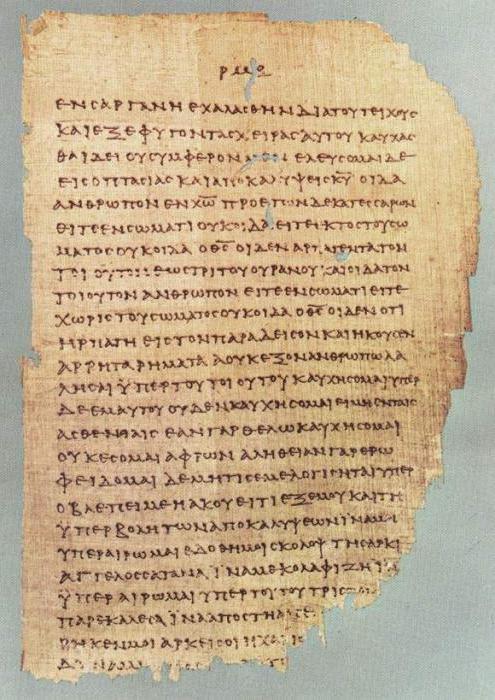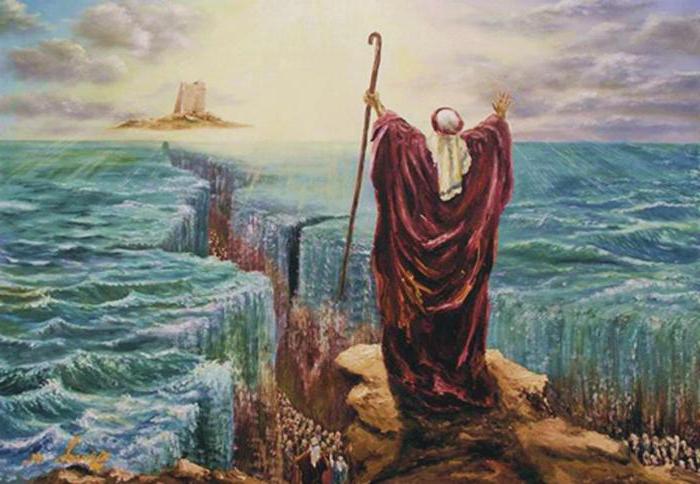When it comes to the Bible, we usually imagine a weighty tome with old texts. This book is read by people tormented by questions about the meaning of life, engaged in theology. Only the name implies not one or two volumes, there are many of them. Let’s figure out how many books are in the Bible, and why it’s impossible to give the exact number. Christianity has long been divided into branches. The most popular are Catholicism, Protestantism and Orthodoxy.
general characteristics
The word "Bible" came to us from the Greek language. It translates as “books” or “scrolls”. Literally, it means a collection of knowledge of great value. Probably, now we would have invested a different meaning in it, we would say that this is a library for the soul.
For several thousand years, these books (and there are many) are considered one of the greatest values, relics created by ordinary people. They inspire, amaze and teach readers, push for thought and new discoveries. However, when the question arises how many books are in the Bible, specialists cannot answer unambiguously. And it's not that volumes are hard to recount. Just different religious schools have formed their own attitude to this topic.
The works related to the Bible were created over the course of about one thousand six hundred years. One part - the Old Testament - was written in pre-Christian times. But it is also customary to attribute it to the Holy Scriptures. Some theologians consider the New Testament a purely Christian revelation. And part of his volumes are not attributed to the Holy Scriptures. This is precisely the difference in approaches. The value of this literature is impossible not to recognize. Specialists studying this topic consider volumes from three perspectives.
What is the value of the Bible
First, these books are the scriptures of the Christian religion. They give readers a spiritual foundation, teach attitude to faith. The book Exodus, for example, is considered one of the sources of law. This part of the Bible contains rules and postulates for believers, canons that must be followed in life. The authors tried to explain to ordinary people principles new for that time, ways of thinking. You must admit that the task was grandiose: to completely reorient the human thought process to other rules, to instill other traditions and ways of being.

Secondly, these volumes are perceived as a source of historical information. The authors present in them not only the events of their present, but also convey the spirit of society. Thirdly, the Bible is a cultural monument. Many texts are evaluated by experts as perfect from a literary point of view. In addition, they are valuable, like any written antiquities. Books are translated into many languages, in terms of the number of publications they are ahead of any other literary works. It affects both their religious and historical value.
Collection Structure
We intentionally do not immediately answer the stated question about how many books are in the Bible. Unfortunately, it cannot be unambiguously and directly revealed. After reading the material to the last line, you yourself will agree with this. The collection is divided into two parts - the Old and New Testaments. They were written by different authors for more than one and a half thousand years. The Old Testament refers to the pre-Christian part of the Bible (sometimes it is referred to as the Jewish). These books are recognized by the Savior, he relied on them and used as the Word of God. Jews recognize only one part of the Holy Scriptures, consisting of the Torah, Neviim and Ktuvim. On the basis of these books, everyone else was created, as well as Christianity itself.

The New Testament describes the life of the Savior and his disciples. These volumes were created after Christ came into the world. All manuscripts, as already mentioned, are very ancient. They were reprinted many times. Because of this, there is confusion with the division into volumes. So, in the Jewish tradition, depending on the views and preferences, it is considered that the books are 24 or 22. And modern Christians publish thirty-nine volumes from these texts.
Bible structure in the Christian tradition
All volumes that have survived to this day are divided not only by authorship and date of writing. Theologians distinguish texts by topic. That is, the Bible consists of books that cover individual topics. In the Christian tradition, the following division is accepted:
- legislative;
- prophetic;
- historical;
- educational and poetic.
Moreover, some theologians attribute part of the volumes to noncanonical. They are not included in the Bible. From here we get a different number of books. But let's go further.
Legislative books
The Pentateuch of Moses is usually included in this section. These publications describe the rules of life for believers. Thus, the book of Exodus talks about the liberation of Jews from Egyptian slavery, their journey through the desert. It ends with a chapter on the conclusion of a new Testament of God with the people. The book of Exodus is the second volume following Genesis. These manuscripts contain descriptive and legislative parts. Each tells about a certain period of life of the ancient Jews. The third volume - the book of Leviticus - is slightly different in content from the rest. It mainly contains instructions regarding religious practices.

In addition to special regulations, the book of Leviticus also includes rules for believers. It talks about how people need to live, what can and cannot be done, and the like. These are the rules of conduct in a society that lives by God's covenants. Some instructions are only suitable for traveling in the desert, others relate to the organization of life in the Land of Israel. The book of Numbers has a completely different meaning. Jewish tradition places a lot of emphasis on inheritance rules. About who was born from whom and how he lived, the book of Numbers tells. The whole volume is a kind of chronology and statistics of those events that occurred during a journey through the desert. The last of the books on this topic is Deuteronomy.
Historical volumes
This part of the Bible is made up of narrative literature. The manuscripts contain information about how the people lived, what they thought about, what tasks they set for themselves. For example, the book of Joshua tells of events that occurred between the death of Moses and the death of the author himself. It is often referred to as the Pentateuch, since this volume logically follows it. However, in content it is historical, descriptive.
The book of Joshua is traditionally named after the author. It is believed that only the last lines are written by another person (the prophet Samuel). This volume, like the others in this section, contains historical information of great value. This book contains stories about military battles and the law of the time. Scientists rely on its content in their work, since the time of its writing is well known. The historical section includes books of Samuel and Kings, Chronicles and others. Educational and poetic literature is Psalms, Parables, Songs of Songs.
The prophecies
The last section consists of volumes describing the revelations received by the authors. For example, the book of the Prophet Haggai contains instructive speeches made before the builders of the temple. These messages were aimed at supporting the spirit of the ancient workers, who succumbed to despondency and were ready to abandon their intention.
The prophet told contemporaries about the value of their work, linking it with what God expects from his people. The meaning of his speeches is also interesting in our time to people who seek to join the faith. The book of the Prophet Zechariah also has an instructive meaning. This man received revelations on how to turn away from evil and go to God. He passed them all to his descendants.
Old and New Testaments
This section of the Bible is composed of very ancient books. Protestants believe that there are thirty-nine, Orthodox Christians — fifty, Catholics — forty-seven. Moreover, among theologians it is customary to separate canonical literature, which is part of Holy Scripture, from that which is not included there. Experts are still debating what the Bible is. The book of Genesis, for example, is all included in the Old Testament, but Solomon’s Wisdom is not. The volumes written later are calculated very differently. The composition of the New Testament Orthodox, Catholics and Protestants include twenty-seven books. There is no discrepancy here. Probably because these manuscripts were created at a time when a system arose that made it possible to preserve religious values, which include books.
So how many books are there in the bible?
Having explained how the studied collection of texts was formed, one can answer the main question. Now you can understand why there are at least three answers to it. So, the Orthodox will say that the Bible consists of 77 books, Protestants recognize only 66 of them, and Catholics are sure that the Holy Scriptures include 74 volumes. Each of them is right in his own way.

Some manuscripts are not included in the canonical literature. But this does not mean that their study is prohibited. Theologians have a very reverent attitude towards historical and religious monuments. They are carefully studied, comprehended, trying not only to understand, but also to be interpreted from a new angle. In addition, these ancient manuscripts are useful to historians. With their help, experts are trying to penetrate the secrets of past centuries. It remains to say that according to modern information, the Bible was created in the period from 1500 BC to 100 g. Moreover, over the past hundred years, all volumes of the New Testament are written.